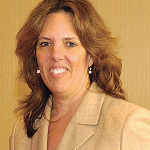Spending Smart
eProcurement systems can consolidate buying across campuses,
stimulate local economic development, and promote green purchasing
options-- all of which carry enormous financial benefits to institutions.
 NO DOUBT ABOUT IT:
eProcurement technology has
turned cumbersome paper-based
processes into highly connected online systems.
The most basic parameters of eProcurement range
from shopping for or sourcing goods, to creating purchase
requisitions and getting them approved, to
placing orders with suppliers, to receiving invoices--
all electronically.
NO DOUBT ABOUT IT:
eProcurement technology has
turned cumbersome paper-based
processes into highly connected online systems.
The most basic parameters of eProcurement range
from shopping for or sourcing goods, to creating purchase
requisitions and getting them approved, to
placing orders with suppliers, to receiving invoices--
all electronically.
But leaders of procurement departments will tell you
that eProcurement can and should be more than just
automation of the purchasing process. It can be a powerful
strategic tool for furthering an institution's financial
and civic goals, as evidenced by the many significant
ways the technologies are being implemented by campuses
across the country. For example:
�
- Higher education institutions have incorporated
eProcurement systems to coordinate departmental
purchases to leverage their buying power with suppliers
and forge better vendor relationships.
- College consortia have pushed the envelope even further
by aggregating spend using an eProcurement
solution.
- Institutions and suppliers are realizing the mutual benefits
of "buying local" by supporting local vendors and
economic inclusion through eProcurement processes.
- Individual institutions and consortia are using
eProcurement to promote green purchasing-- potentially
a big win for both the planet and the budget.
Here's a look at how various higher ed institutions are
using eProcurement to achieve economies of scale
across campuses, support local enterprise, and encourage
sustainable purchasing practices.
The Power of Consortia
The University of California, made up
of 10 campuses and five medical centers,
is one of the largest, most diverse
university systems in the country. The
university has a long history of pursuing
contracts via a systemwide strategic
sourcing program that identifies products
and services common among the
UC campuses and then leverages purchasing
agreements with appropriate
vendors. But many procurement officers,
including UC-San Diego's Director
of Procurement Ted Johnson and
Chief Procurement Officer Linda
Collins, observed that the contracts
were not being effectively utilized.
There was no reliable mechanism to
inform various campus users about supplier
agreements that could save the university
millions. So beginning in 2007,
UCSD drove an eProcurement consortium
initiative for the entire UC system
to identify and implement an infrastructure
that could be managed centrally by
the University of California Office of
the President (UCOP).
 "Penn tries to leverage its position as a large
institution to foster economic development in the local/regional area." -- Marie Witt, U Penn
"Penn tries to leverage its position as a large
institution to foster economic development in the local/regional area." -- Marie Witt, U Penn
The consortium formed officially in
fall 2009, is managed by UCOP, and is
operating initially with four campuses--
UC-San Diego, UC-Santa Cruz,
UC-Berkeley, and UC-Riverside. The
campuses have standardized on a
SciQuest eProcurement solution that
gives them the ability to modify catalog
and price files to meet the unique needs
of their users, while offloading to
UCOP the larger procurement challenges. "These campuses understood
the large amount of resources they were
giving to catalog management and price
file management," Collins explains.
Now, the consortium will centrally manage
the process at UCOP and will be
able to push out better information on
supplier contracts. "The result is not
only a reduction of repetitive functions,
but it allows the University of California
to speak with a common voice in the
execution of the contracts," adds Johnson.
Suppliers, too, enjoy the advantages
of consolidating their efforts and
are able to pass significant savings on to
consortium members as a result.
The SciQuest software also offers a
dashboard view of spending that gives
UCOP real-time data on consortium
members, a terrific improvement over
waiting for separate reports to come in
from various campuses. This system provides
UCOP with a direct view into the
spend of member institutions to identify
trends and manage vendor contracts
more effectively, especially as more of
the UC campuses join the consortium.
Putting the Strategy
Into Procurement
The University of Missouri also created
a purchasing consortium among its four
campuses and one hospital. Years ago,
the university brought the campuses
together in a centralized procurement
function with the idea of aggregating
their spend volumes in major commodity
areas. But even after years of aggregation
they found that, while they did realize
some savings, they were only achieving
about 30 percent contract compliance.
Bill Cooper, associate vice president
of management services and chief procurement
officer at the University of
Missouri, decided that eProcurement
was the "missing link" in the institution's
consortial strategy. He explains that
"there had always been conversations
that claimed we had a strategic procurement
operation. Well, in fact, strategic
contracting is all that we had really done.
And until you get information about
those contracts in such a format that your
users can actually access it, and it has an
impact on your contract compliance, you
haven't reached strategic procurement."
 "We look at whether a product is certified by
a green certifying entity, and who the entity
that certified it is-- because some are better
than others." -- John Riley, Arizona State
"We look at whether a product is certified by
a green certifying entity, and who the entity
that certified it is-- because some are better
than others." -- John Riley, Arizona State
In 2007, the consortium introduced a
unified eProcurement solution, integrating
a SciQuest managed services environment
front end, which UM dubbed "Show-Me Shop," with UM's Oracle
PeopleSoft Enterprise back end. Since
then, the consortium has increased its
contract compliance to 46 percent and
has realized $11 million in savings.
Cooper comments, "What makes procurement
a strategic activity is its ability
to act as a revenue generating center,
to pull money out of the supply chain--
so the costs of material goods and services
can be reallocated to the core
missions of the institution." The key,
says Cooper, is tying sourcing together
with the ordering. "ERP systems don't
[normally] provide that-- they are portals
for getting your purchasing data into
your general ledger," he explains. "But
eProcurement adds in the sourcing, the
'shopping' aspect, and it does it in such
a way that makes it simple for the multitude
of users that we have."
A good example of how eProcurement
works to generate revenue in the supply
chain can be seen in the way UM
brought its purchasing card, or P-Card,
system under control. During the five-plus
years when UM was working with
strategic contracting but had no eProcurement
system, its purchasing card
program became extremely popular with
campus administrators. The intent of the
cards was to address unanticipated low-dollar-volume purchases-- to give more
flexibility to the departments on occasional
lower-cost purchases. That's not
all that happened however, says Cooper. "The reality is that those cards got to be used for everything because they were so
easy-- the path of least resistance. Of
course, there were some ills to that,
especially the lack of spend visibility.
And they facilitated more maverick
spending." Now that UM has an eProcurement
system, the university doesn't
allow use of the P-Cards with any supplier
that is a contract vendor in Show-
Me Shop, ensuring that the spend is
tracked through the eProcurement system
and can be leveraged for contract
negotiation. "That takes [the cost of
those P-Card transactions] out of the
supply chain and by doing so allows
those vendors to share some of the savings
with us in the form of further discounted
products," Cooper notes.
Cooper is now working on expanding
UM's consortium to include other institutions
in the state. "Approaches such as
this are the way of the future, because we
are all challenged with reduced endowments
and reduced state funding," he
comments. "We've just got to be more
entrepreneurial in the way we provide
administrative support. And procurement,
I think, has the opportunity to do
things that most other departments can't.
We can really escalate our strategic
value to our institutions because we have
the wherewithal to be revenue centers
instead of just cost centers."
Spend Locally, Think Green
eProcurement can touch the overall
strategic goals and mission of the institution
in ways that go beyond cost-savings
imperatives. Two excellent
examples are regional eProcurement
consortia that support local suppliers,
and green ePurchasing.
When a consortium extends membership
to smaller colleges and universities
in its state or region, it gives those institutions access to cost-effective volume
pricing that the smaller institutions
could not otherwise reach, which produces
a "trickling out" effect on the
regional economy. eProcurement strategies
can even further benefit the
region's economic development by
focusing the consortial spend on local
vendors, including smaller or minority
suppliers, which opens up new possibilities
for competition in the marketplace.
At the University of Pennsylvania,
one of the largest dollar-volume purchasers
in the city of Philadelphia,
regional economic development is an
institutional priority and a commitment
the university supports, in part, through
its eProcurement activities. Marie Witt,
Penn's vice president of business services,
explains, "Penn really tries to
leverage its position as a large institution
to help foster economic development
in the local/regional area and
support smaller [local enterprises]
through consortia relative to economic
inclusion efforts." Through the
Philadelphia Area Collegiate Cooperative
(PACC), Penn partners with smaller
schools in the area that do not
purchase at the level Penn does. PACC
also brings in smaller suppliers in the
region that may not yet have the technological
capabilities or throughput to
work with a very large institution like
Penn. These small suppliers work first
with the consortium's smaller schools,
while PACC helps them ramp up to
meet the demands of much larger customers.
Penn also partners with the
Pennsylvania Minority Business Enterprise
Center in Philadelphia, which
plays a key role in getting fledgling
businesses up to speed with the technology
competencies they'll need to do
work in what locals refer to as the "Penn
Marketplace."
Ralph Maier, chief procurement officer
at Penn, explains, "The challenge we
have is not finding suppliers who are
interested in doing business, but finding
suppliers who have the eBusiness capabilities
to match our eProcurement environment
and the skills and capabilities
to interact with us electronically."
Maier says that the eProcurement
consortia empower a diverse supplier
base that reflects the local community
and allows local businesses to prosper
and develop new clients. He adds, "From a technology perspective, that
has been one of the major benefits of
our eProcurement application. We now
can get smaller suppliers on a level
playing field with larger competitors
through the eProcurement application.
If we are able to take a small, local supplier
and help it to build the capability
to develop electronic catalog content,
that enhances its ability to grow business
here at Penn, and grow it quickly in
a very cost-effective manner."
Environment and sustainability priorities
at Arizona State University have sharply focused John Riley's
attention on the green opportunities
inherent in eProcurement. Riley, who
is ASU's executive director of purchasing
and business services and president
of the National Association of Educational
Procurement, points out that
"some 650 universities have signed the
American College & University Presidents'
Climate Commitment and
expect to be, at some point in the
future, carbon neutral"-- which compels
him to continually look for ways to
deepen his campus's green procurement
practices.
eProcurement tools that can identify
dollar costs and guide smart spending in
financial terms are well established, but
purchasing tools to determine green
value are still evolving. Some green purchasing
factors are more obvious than
others and are already standard decision making
considerations in procurement--
things like the impact of transportation,
types of packaging, and reusability of
packaging. But when you drill down
further into the environmental aspects
of purchasing, it's not yet clear how to
characterize, track, and fully leverage
meaningful green procurement. "That's
the interesting challenge," says Riley,
looking to the future.
In the meantime, Riley currently uses
all available green eProcurement strategies.
He explains: "What we always look
for is whether a product is certified by a
green certifying entity, and who the entity
that certified it is-- because some are
better than others." In addition, eProcurement
systems can prominently feature
green products among all the other
items under contract, so that more campus
buyers will be likely to select them.
eProcurement applications also can
make it easier for users to order in sizes
or quantities that are appropriate for
their needs, both to cut waste and in
some circumstances, as with certain
dangerous laboratory chemicals, to
reduce the amount of risk. "We're
always looking at minimizing the waste
stream, especially for hazardous materials,"
comments Riley.
eProcurement applications have
already automated information-rich
"smart" purchasing decisions by presenting
users with a structured range of
choices that can be acted upon without
direct involvement of procurement
department staff. The next step may be
factoring more sophisticated analysis
and intelligence into the managed
sourcing systems, including leveraging
eConsortia and better assessing the
environmental impact of purchases.
The most striking uses of eProcurement
applications are yet to come.
::WEBEXTRAS ::
Head to our Administrative & Business Tools solution center
for the latest news, case studies,
research, features, and more.